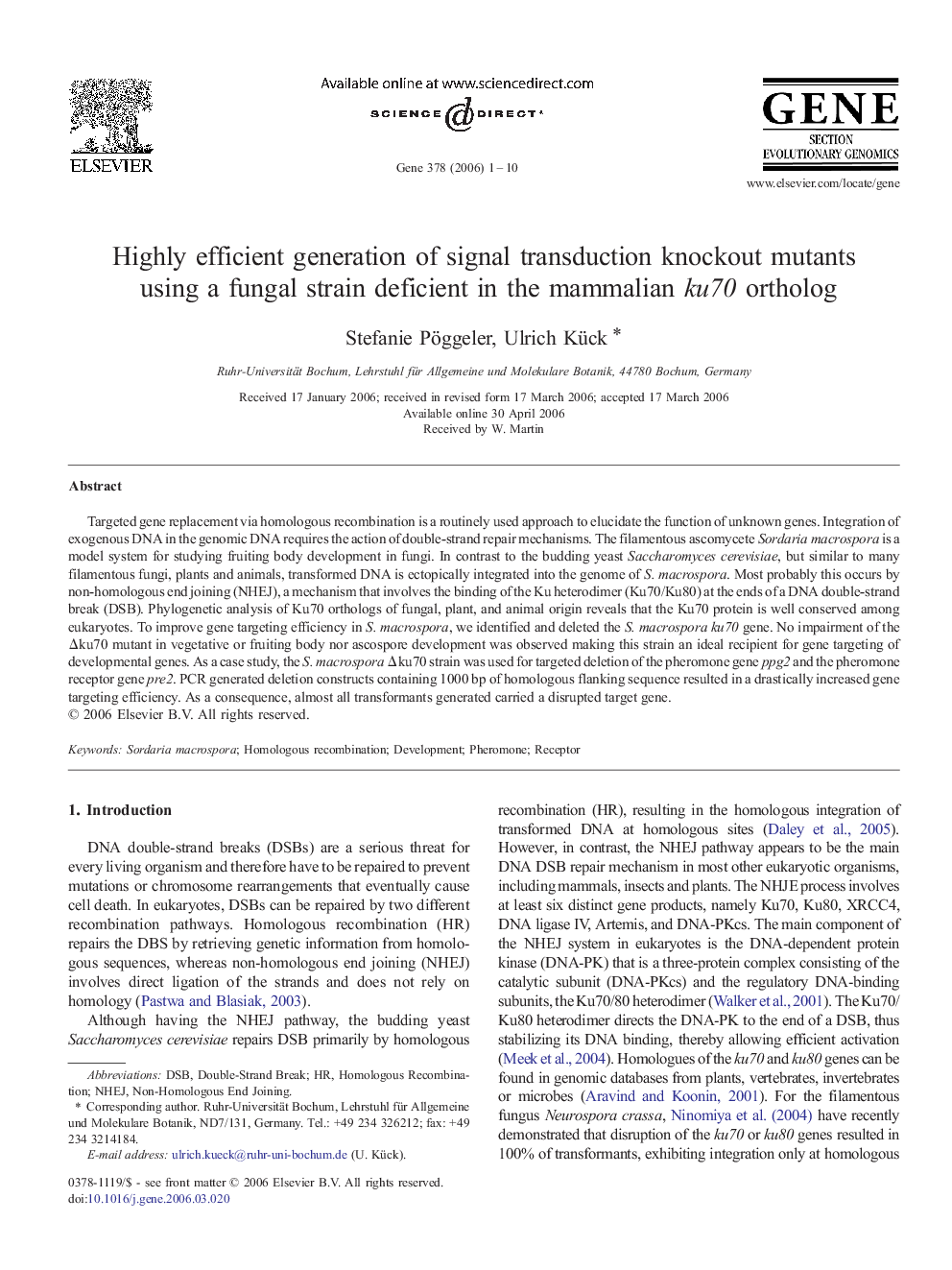| Article ID | Journal | Published Year | Pages | File Type |
|---|---|---|---|---|
| 2820195 | Gene | 2006 | 10 Pages |
Targeted gene replacement via homologous recombination is a routinely used approach to elucidate the function of unknown genes. Integration of exogenous DNA in the genomic DNA requires the action of double-strand repair mechanisms. The filamentous ascomycete Sordaria macrospora is a model system for studying fruiting body development in fungi. In contrast to the budding yeast Saccharomyces cerevisiae, but similar to many filamentous fungi, plants and animals, transformed DNA is ectopically integrated into the genome of S. macrospora. Most probably this occurs by non-homologous end joining (NHEJ), a mechanism that involves the binding of the Ku heterodimer (Ku70/Ku80) at the ends of a DNA double-strand break (DSB). Phylogenetic analysis of Ku70 orthologs of fungal, plant, and animal origin reveals that the Ku70 protein is well conserved among eukaryotes. To improve gene targeting efficiency in S. macrospora, we identified and deleted the S. macrospora ku70 gene. No impairment of the Δku70 mutant in vegetative or fruiting body nor ascospore development was observed making this strain an ideal recipient for gene targeting of developmental genes. As a case study, the S. macrospora Δku70 strain was used for targeted deletion of the pheromone gene ppg2 and the pheromone receptor gene pre2. PCR generated deletion constructs containing 1000 bp of homologous flanking sequence resulted in a drastically increased gene targeting efficiency. As a consequence, almost all transformants generated carried a disrupted target gene.
